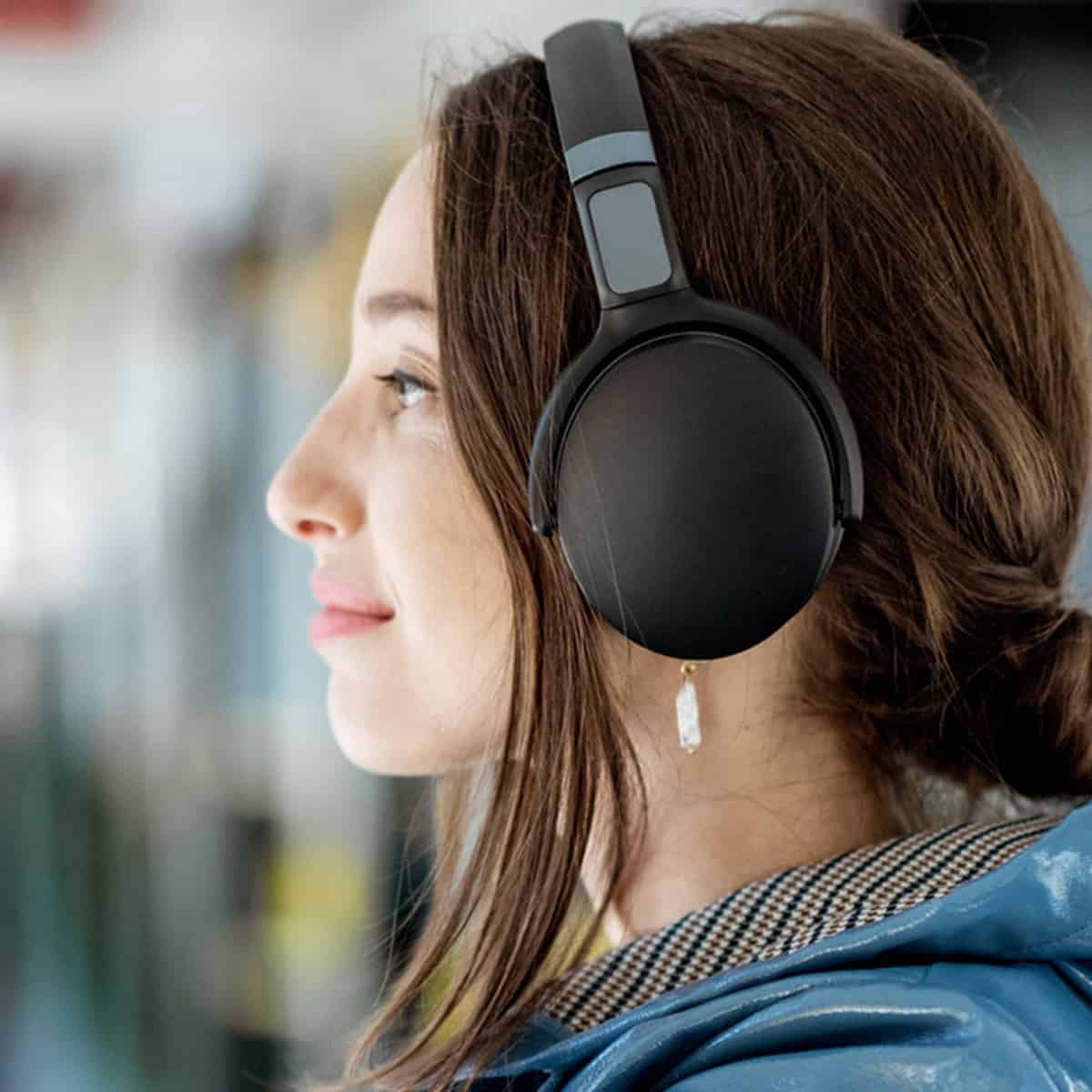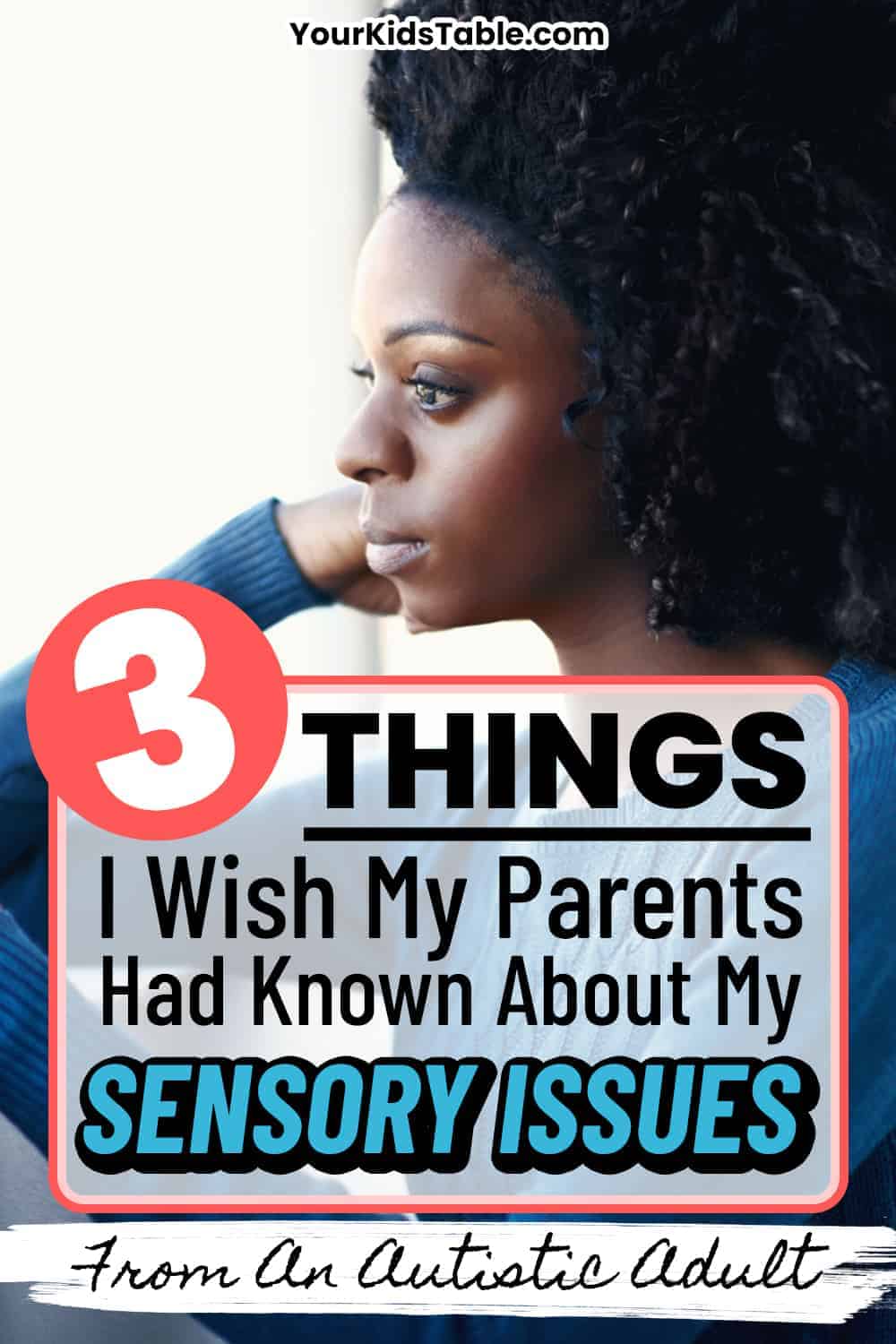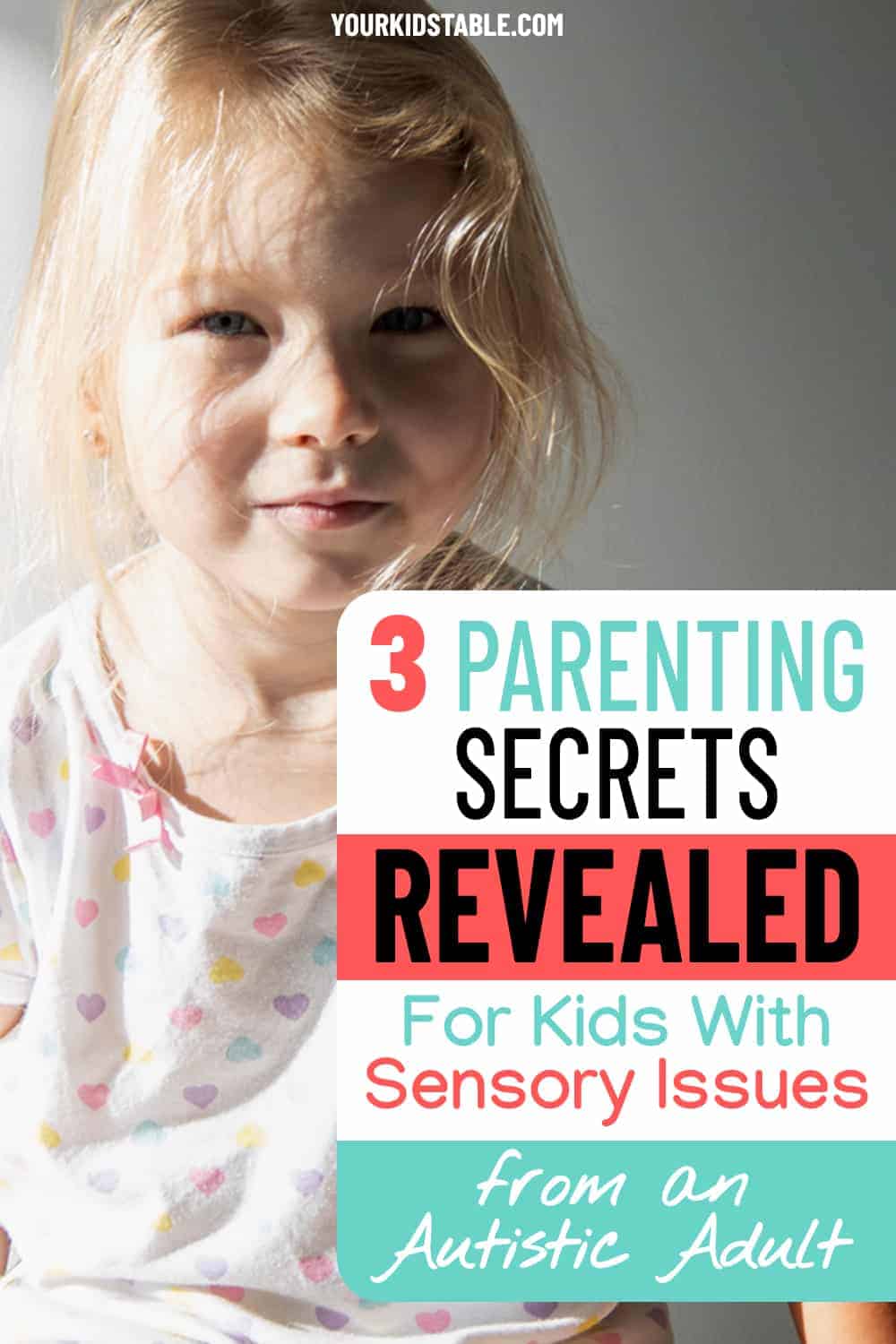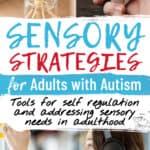An Autistic adult, that was once an autistic girl, offers 3 things she wishes her parents knew on how to support kids with sensory issues as they grow and change.
As occupational therapists, at Your Kid’s Table we know that development happens across the lifespan, and that sensory kids grow into sensory adults. And, that sensory processing affects ALL people in different ways, from infancy to adulthood.
People with Autism are more likely to show sensory processing sensitivities including sensory seeking or avoidant responses to day-to-day life.
As a late-diagnosed autistic adult, our guest Lauren is learning how to manage an array of sensory issues much later than she might have liked. To help others in her situation, she created Colour me autistic, a home for real-life reflections and practical tips for autistic adults.
Today, this sensory adult is sharing some powerful insight into what it’s like to experience sensory needs, and three things she wishes her parents had known while she was still a sensory kid!
While the majority of resources shared by Your Kid’s Table are geared toward children, her adult perspective is helpful as we seek to support our sensory kids.
I had always struggled with anxiety and burnout. I tried and failed all sorts of ways to improve things. To me, this felt crippling and confusing. But, to others, it seemed largely invisible.
Then, I found videos of autistic women talking about their experiences. Not only did the sensory issues, routine needs, and difficulties handling change ring true, but they gave me a piece of the puzzle I had always been missing: masking. They described how manual social interactions felt, how much they hid their instinctive reactions to their environment, and the impact that had on them every day.
Suddenly it all made sense. I had never realised how much manual effort I was putting in to cover up my autistic traits and “fit in”… No wonder human interaction is so exhausting!
I was diagnosed as autistic at 27. A few years on, I’m still figuring out how best to support myself. And I am getting there.
Discovering How “Sensory Stuff” Impacts Me
Since my autism diagnosis, I have learnt how much of an impact my sensory issues have day-to-day. They affect how I feel (good and bad), how I interact, and how much space there is in my brain for sometimes even very basic functioning.
During my autism assessment I was told that I have quite an extreme sensory profile. With hypo- and hyper-sensitivities across every sense.
The “external” senses like sound and smell were less of a surprise – although, I had not appreciated the impact they were having. The “internal” senses like interoception or proprioception, which provide vital context for so many other senses, were a complete revelation.
To give one example: I have always felt like I’m in a bit of a dream. Very disconnected from my body, unable to “feel” my limbs properly. I often get mixed up when sitting close to someone about whose legs belong to who… Now I understand that this is because my brain does not get enough proprioceptive input.
And that increasing this type of input massively reduces my anxiety. (In fact, this was how I first came across Your Kids Table, in search of proprioceptive activities… Joint compressions, anyone? Yes, please!)
There are a thousand other examples like that.
So, I want to share three things I wish my parents had known. Things that would have had a big impact on my experiences as a kid with (as it turns out) quite complex sensory needs.

1. Sensory Needs Exist!
Now, since you are reading this, you probably know this one already… But it is not common knowledge, and even less so thirty years ago.
As an autistic person with a lot of sensory issues, I need to actively manage my sensory inputs in order to control my anxiety. This means reducing unpleasant stimuli, increasing pleasant stimuli, and finding workarounds for my poor interoception skills. Without managing these things, I’ll quickly be heading for meltdowns, burnout, panic attacks, sleep disturbance, and problems with eating.
Reducing unpleasant stimuli for me means carrying a sensory kit while out and about (e.g. headphones, sunglasses, strong tasting boiled sweets), and adapting my home environment to suit me better (e.g. dimmable lights, shutting doors to control cooking smells, using headphones, changing clothing to avoid seams, changing towels to avoid certain textures, keeping my nails short to avoid tactile issues there, avoiding foods that feel “difficult” to eat).
Increasing pleasant stimuli for me means adding in nice things! The advantage of being super-sensitive in some areas is that nice things feel even nicer to me than they might for most people.
I burn essential oils, make my own perfume, use various stretchy or squishy fidget toys, rock, jump, use a sensory sock, get joint compressions, listen to ASMR or to familiar podcasts, and eat foods that I used to eat as a kid.
Finding workarounds for poor interoception skills has been an important addition. Without doing this, I was interpreting things like being hungry or too cold as “I’m anxious!” rather than dealing with the issue. This often led me to feel sick or unwell without realising why.
I now check a thermometer in my house for temperature, and have scheduled times of day to eat meals, snacks, and check in with my sensory needs. I’m also working on pausing and noticing how I’m really feeling when my first thought is “I’m anxious”.
Often it’s quite a nice surprise to learn that in fact, I’m just too warm, and there is no complex emotional need going on after all!
There are lots more sensory-related autism tips for adults at Colour me autistic.

2. What Sensory Overload Looks Like
In hindsight, this happened to me a lot. Long before I realised what it meant. For me, sensory overload can look like some or all of:
- Hiding in dark or small spaces
- Needing to be alone a lot
- Being really fidgety or restless
- Staring blankly for long periods of time
- Withdrawing from people
- Getting upset about the prospect of doing things or seeing people that would normally be positive
- Crying or getting angry very easily
When I am overloaded I need to reduce sensory inputs, not speak to anyone, and bury myself in something familiar. I have a little basket of nice sensory things in my living room which help with this, and different corners/cupboards I can sit in if needed.
I’ve also got a blackout tent that I pop up if I’m going through a particularly tricky patch. And my friends know that if I disappear off by myself for a bit during a social event, this does not mean I want someone to come and find me(!) I just need a few minutes and will be back when I’m feeling calmer.
3. What You See is Not Always the Whole Picture
Like many bright autistic girls, I got really good at hiding my autistic traits, from a really young age. That includes learning to mimic social cues like eye contact, body language, tone of voice. I also learned to suppress my autistic traits, and certain aspects of my personality.
Because I was so good at this… the level of anxiety I was experiencing every single day was not visible. This “masking” is a particularly common trait in autistic women and girls, and it takes a huge toll.
I have vivid memories about hiding my reactions to smells in particular. Being near a cup of tea or a dog while eating, feeling physically sick and like I wanted to scream at someone or run and hide, but instead having constant conversations with myself in my head to stay on track and not “overreact”.
Now I understand that those things are needs, not preferences. And will avoid them wherever possible!
Since my diagnosis, I’ve also noticed instinctive urges to rock or snap my fingers or wriggle around. Often while eating, socialising, or when stressed. That instinct can’t be new. I must have been fighting it for years in order to appear “normal.”
I can remember often feeling fidgety and restless to the point of wanting to sprint away from situations or lash out at someone, even when nothing overtly stressful was happening. I wonder now if that was actually the urge to move around in this way, I just didn’t understand the signal.
For the record, I do not mean to unsettle parents with this point. While you can’t read your kids thoughts, you do know them better than anyone.
Be curious about how they’re feeling, notice behaviour patterns, and if you think they’ve got sensory issues then take their reactions to sensory stimuli seriously.

Lauren runs Colour me autistic, full of real-world reflections and practical tips for autistic adults. Lauren also runs surveys via the Colour me autistic newsletter to get insight from a broad range of autistic adults about their experiences and “what works”, which she shares on the website. See all this and sign up to the Colour me autistic newsletter at www.colourmeautistic.com.
Alisha Grogan is a licensed occupational therapist and founder of Your Kid’s Table. She has over 18 years experience with expertise in sensory processing and feeding development in babies, toddlers, and children. Alisha also has 3 boys of her own at home. Learn more about her here.



I learned about how my non-verbal son might be feeling and experiencing the world from your article. Thank you.
Happy to hear it! Thanks for following along!
Best,
Laura
Your Kid’s Table team member
Thank you for your input with examples and realistic solutions!
Hi Fred! Thank you for reaching out and sharing your feedback! So glad you found this post helpful. Thank you for your support 🙂
Best,
Kalyn
great sensory article with wording and examples parents and teachers can understand
Awesome Diane, so glad you enjoyed it!